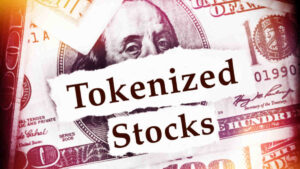Paxos lawyer: Tether and USDC not ‘real stablecoins’

Getty Images
The company behind the Paxos Standard stablecoin has taken a swipe at its larger rivals, with its general counsel writing that Tether and US Dollar Coin are unregulated “stablecoins” in name only.
“These tokens are backed by illiquid and risky debt obligations – a critical weakness that no prudential regulator would allow to exist as this creates undue risk for their customers,” Paxos Trust lawyer and chief compliance officer Dan Burstein wrote in a blog post.
Burstein said he’s worked hard to get the Paxos Standard and the Binance Dollar (a branded stablecoin that Paxos issued in partnership with the crypto juggernaut) approved by a regulator, named the New York State Department of Financial Services.
That means each token is backed by reserves in the safest instruments, such as bank deposits insured by the US Federal Deposit Insurance Corporation or short-term maturity US Treasuries, Burstein wrote.
Gemini Dollars, issued by Cameron and Tyler Winklevoss’s Gemini Trust Company, are similarly regulated by the same entity, he said.
“Regulatory oversight is important because it assures stablecoin users that the dollars underlying their stablecoins are secure and will be immediately available when they want them,” Burstein wrote.
But both USDC and Tether lack such safeguards and “are backed substantially by corporate debt obligations,” he wrote.
Tether is the biggest stablecoin, with a market cap of US$62.6 billion, playing a vital role in the crypto ecosystem. USDC is No. 2, with a market cap of US$21.1 billion, making it the No. 6 crypto overall. BUSD is next at US$11.3 billion, while Paxos Standard is the No. 8 stablecoin with $904.6 million.
USDC, Tether reserves
Centre, the consortium behind USDC, didn’t respond directly but issued a blog post noting that a May attestation by accounting giant Grant Thornton confirmed that all tokens were “backed by a minimum of 1:1 dollar-denominated assets”.
That attestation indicated that 61 per cent of Centre’s reserves were backed by “cash & cash equivalents,” with the rest backed by Yankee CDs (certificates of deposit issued by foreign banks in the United States); US Treasuries; commercial paper; corporate bonds and municipal bonds.
The five per cent of USDC’s reserves in corporate bonds are issued by institutions with a minimum S&P rating of BBB+ (medium-grade) and have a maximum maturity of three years, the report said.
Tether Holdings Limited in May broke down its reserves for the first time with a pie chart saying that 75 per cent of its reserves were in cash, cash equivalents, and other short-term deposits and commercial paper.
Twelve per cent were in secured loans (none to affiliated entities), 9.96 per cent were in corporate bonds, and 1.6 per cent were in “other investments (including digital tokens)”.
Unspecified commercial paper came to just under half of USDT’s collateral, Coindesk reported.
Paxos critique
Burstein said that stablecoins backed by corporate debt obligations don’t fully protect consumers, and that unregulated issuers can and do use consumer funds to pursue high-yield strategies for their own financial gain.
“Users who are willing to tolerate the risk of a token backed by only 61% cash or cash equivalents (in the case of USDC) or 5% (in the case of Tether) should be free to take that risk — subject of course to applicable securities laws. But these tokens are not regulated, and they should never be confused with a regulated token,” he wrote.
Tether executives Paolo Ardoino and Stuart Hoegner, interviewed on US business channel CNBC on Wednesday, promised that a full audit was in the works and would be released in “months,” not years.
In its blog post, Centre said it would “continue to work towards the goal of supporting an open and trusted financial system by enforcing and strengthening our standards and policies that provide the framework for USDC and future Centre standard stablecoin governance.
“Our guiding principles of transparency, accountability, and trust allow users to make every transaction with confidence.”
Related Topics
UNLOCK INSIGHTS
Discover the untold stories of emerging ASX stocks.
Daily news and expert analysis, it's free to subscribe.
By proceeding, you confirm you understand that we handle personal information in accordance with our Privacy Policy.








